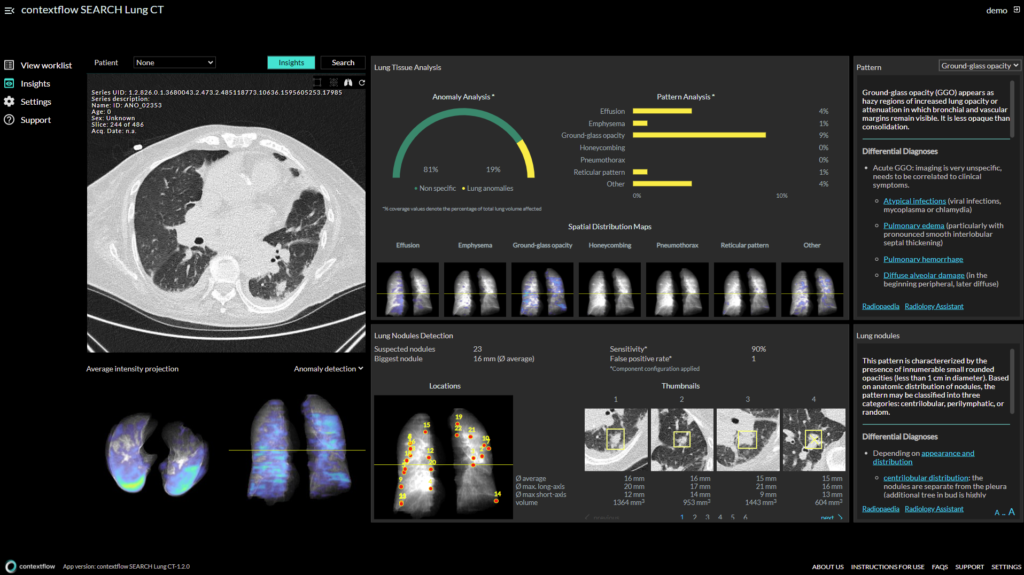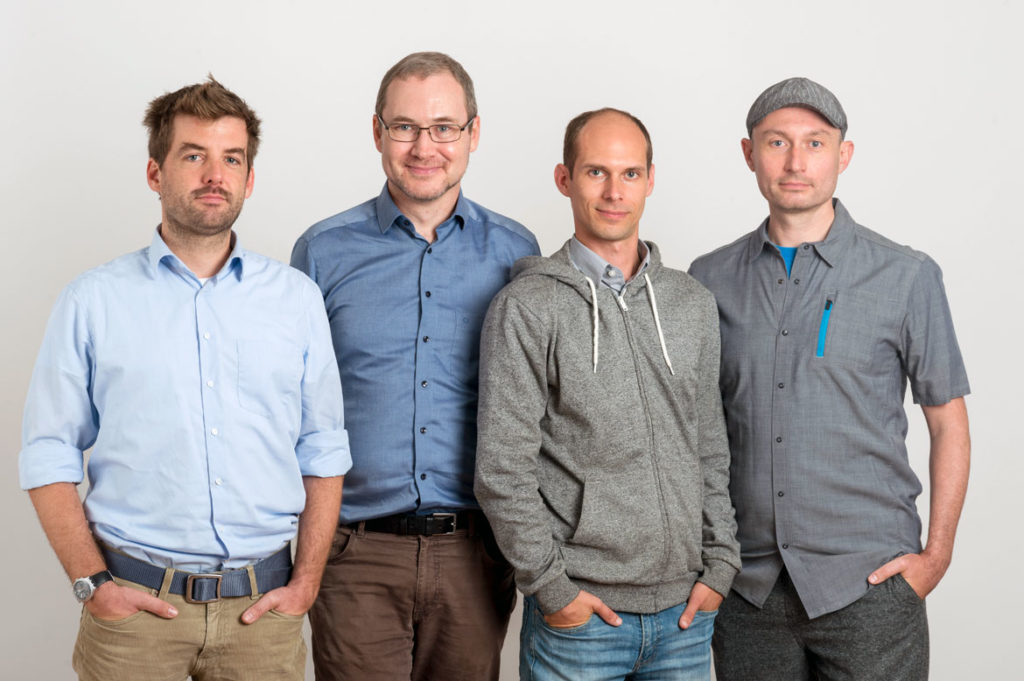At Crista Galli Ventures, we are long deep tech radiology. This journey started in 2019 when our founder left frontline radiology to become an investor. The global market for medical imaging AI applications is projected to reach almost $1.2 billion by 2025 with a CAGR of 26%, an increase of over $800 million from the market size in 2020. We predict this increasing much more as the market evolves over the next decade. With reimbursement codes being given for AI solutions in the US (Viz.ai, Caption Health etc), the door is now open for European deep tech radiology startups to make it in the US.
contextflow 2019
Crista Galli Ventures invested in contextflow, a spin-out of the Medical University of Vienna, in 2019 when the company was at seed stage. Founded by four technical founders (Markus Holzer, Georg Langs, Allan Hanbury and René Donner), contextflow is run by credible experts in the deep learning space. Their links to the University Hospital of Vienna allowed them to learn about the work of radiologists, understand the radiologists’ pain points and build AI solutions that really fit clinical needs. Many deep tech companies fail as they build great tech which they try to retrofit to a clinical problem. Really understanding the radiologist and patient pathway has helped contextflow build solutions that make a real difference.
contextflow were already thinking differently in 2019. As they were an all-male, technical founder team, they hired Julie Sufana, an American Chief Marketing Officer as one of their early hires. Julie helped to amplify the company’s voice from the early days and brought diversity to the team. In fact, we met contextflow via Twitter before meeting them in person at the European Society of Radiology (ESR) 2019, in Vienna.

Radiology Value Chain
There are multiple steps to the radiology value chain with startups working across all these domains. contextflow is unique in that they work on point 6: diagnostic reasoning, arguably the hardest part of this value chain.
- The Electronic Patient Record where the referring clinician books a scan for their patient.
- Scheduling software where the patient is given an appointment for their scan.
- Image acquisition where images are acquired on expensive scanners which comprise of cutting-edge software and hardware.
- Data processing where the images are optimised and enhanced for analysis.
- Identification where any abnormalities are detected by the radiologist.
- Diagnostic reasoning where the radiologist uses their expertise and accumulated knowledge to diagnose the patient.
- Report generation – each patient who has a scan will have a report generated for their result.
- Discussion of the findings. This can happen one to one between clinicians or with multiple clinicians from different specialties at a Multidisciplinary Team (MDT) meeting, sometimes called tumour boards in the US.
Diagnostic Reasoning
First year radiology residents learn that knowing what is ‘normal’ takes a lot of practice due to the beauty of our anatomical individuality. Once you know what ‘normal’ is, only then can you spot abnormalities. This can also be hard; when you begin your career you can ‘overcall’ meaning you call normal findings abnormal or ‘undercall’, where you find call abnormal findings, normal. Yet spotting abnormalities is not the whole job, a radiologist fits the abnormalities into a framework to come up with a diagnosis that makes sense in the context of clinical findings, blood tests, clinical history etc. This diagnostic reasoning is the hard part of radiology and it takes human radiologists several years to get it right consistently. Indeed, some of the best radiologists make this process seem like both a science and an art.
As contextflow have gained a deep understanding of the radiologist’s workflow, they know that the most valuable place for AI to a radiologist of the future will be in diagnostic reasoning. Instead of ‘just’ focusing on a single modality or single system, contextflow have taken the path less travelled and are one of the only deep tech radiology startups working in the diagnostic reasoning space. Their AI solutions don’t ‘just’ spot abnormalities, they aid radiologists diagnostic reasoning. There is a nuance to diagnostic reasoning that radiologists gain over time. This nuance and uncertainty in tricky cases is why most AI startups work in different parts of the value chain.
contextflow’s sophisticated AI products help radiologists with prioritising studies according to severity of findings (contextflow TRIAGE), allow radiologists to look up areas of uncertainty on scans and cross-reference to patterns of diseases linking to image databases (contextflow SEARCH) and monitor changes in scans over time which will help MDT discussion of the patient (contextflow TIMELINE). contextflow SEARCH is the flagship product, currently in chest CT but soon moving to brain MRI.

How will they use the funds from series A?
contextflow plan to use the funds to scale their sales team throughout Europe and the US, gain FDA approval and expand into new modalities and organs. Currently at around 30 people, contextflow plans to grow to around 45 in the team over the next 18 months. They have recently appointed long-time adviser and mentor of the company, Marcel Wassink, as Chief Commercial Officer. Previously at Philips, Marcel scaled SpeechMagic, Philips’ voice recognition software for radiologists. SpeechMagic was subsequently acquired by Nuance in 2008. contextflow also plan to hire across development, customer support and installation.
On the series A raise, our founder, Dr Fiona Pathiraja, said,
“contextflow is revolutionising radiology, and doing so in a way that perfectly integrates into existing workflows. Their AI solutions provide sophisticated solutions to assist radiologists prioritise their daily work. As a VC founded by an ex-radiologist, we understand what radiologists are seeking in AI solutions. We are looking forward to continue to support contextflow as they continue to scale their technology into new use cases, organs and modalities.”
Read more about contextflow’s $8M Series A here.
